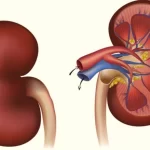Type 2 diabetes
The most common sort of diabetes is named type 2 diabetes. This is such a common problem, due to which the level of sugar in the blood rises very high. Type 2 diabetes usually occurs in older people, but it can occur in younger people, and sometimes even in children. Symptoms of type 2 diabetes depend on the amount of sugar in the blood. This can cause symptoms such as excessive thirst, frequent urination, lethargy, fatigue, sleepiness, blurred vision, increased appetite, and rapid weight loss.
To test the problem, doctors ask about your previous health information and check your symptoms. A blood test can also be done to find the level of sugar in your blood.
It is not possible to cure type 2 diabetes, but it can be controlled and maintained with the help of some types of treatment. By keeping type 2 diabetes in check, the patient leads a healthy and active life. Most people control type 2 diabetes by eating healthy food, exercising, and periodically checking for blood glucose.
But some people also have to take medicines to control diabetes. Due to high levels of sugar in the blood, serious problems develop over time, including the heart, kidney, veins, eyes, gums, and teeth.
What is type 2 diabetes?
It is a long-term medical problem in which the level of sugar or glucose present in the blood is greatly increased. In type 2 diabetes, your body’s cells are not able to respond to insulin so well as they should.
What are the symptoms of type 2 diabetes?
In diabetes, many people do not feel any symptoms, while some signs are treated as signs of aging. Therefore, type 2 diabetes is usually detected only by examining another disease. People with type 2 diabetes often experience the following symptoms:
- Feeling tired and lethargic
- Always hungry
- More thirsty
- Frequent urination, especially at night
- skin infection
- Blurry
- Loss of body weight without any reason
- Having a headache
- Feel dizzy
- Leg cramps
- Itching around the genitals
- Skin cuts or wounds take longer to heal
- Itching
- Be irritable
- Frequent mood changes
- Black rashes on the skin, black spots appear on the thighs and neck of some people with type 2 diabetes.
When to see a doctor?
If someone in your family has diabetes and is feeling any of the symptoms mentioned above, you should go to the doctor as soon as possible.
Causes and Risk Factors of Type 2 Diabetes
The pancreas in the body of a healthy person makes insulin, with the help of which the body collects and uses the sugar derived from food. Type 2 diabetes often occurs due to the following conditions:
- When the pancreas stops making insulin.
- When the pancreas produces a minimal amount of insulin, and the body is unable to produce as much insulin as is necessary. In such a situation, sugar starts accumulating in the blood instead of going into the cells.
- When the body does not react to insulin properly, this condition is called “Insulin resistance”.
- When glucose accumulates in the blood rather than in the cells, it causes damage to many parts of the body. The cells do not function properly if they do not get insulin as per the requirement.
The danger of type 2 diabetes increase
Some factors increase the risk of developing type 2 diabetes, such as:
- Ages: As your age increases, the risk of developing diabetes increases, the risk of it usually starts increasing after the age of 45 years. This is because, after this age, people often reduce exercise, etc., due to which the muscles start to weaken, and the weight increases. But diabetes can occur in children, adolescents, and even children.
- Weight: Overweight gain is the most common risk factor for diabetes. The fattier (fatty) your tissue is, the more insulin resistant your cells become. However, diabetes doesn’t need to occur only when there is obesity.
- Family problem: If any of your parents or siblings have diabetes, then you are also at increased risk of getting this disease.
- Flat Stomach: If your body fat is accumulating more in the abdomen than in the hips or thighs, there is an increased risk of developing type 2 diabetes.
- No mobility in the body: The less physically active you are, the greater your risk of developing type 2 diabetes. With the help of physical activity, the body uses glucose as energy, which makes your cells sensitive to insulin. By doing physical activity, your weight is additionally normal.
- Polycystic Ovarian Syndrome: Polycystic ovarian syndrome (PCOS) in women increases the risk of diabetes.
Type 2 diabetes prevention
Type 2 diabetes can be prevented with the help of some of the following measures:
- Know about diabetes: Learn about its causes, risk factors, and find out how serious it is.
- Keep going to the doctor for regular check-ups: As you get older, you should get into the habit of regularly checking blood sugar, blood pressure, and blood cholesterol levels.
- Don’t drink sweets: Drink plain water instead of drinking sweetened beverages
- Keep your body weight normal: More fat in the body, especially if there is fat in the stomach, increases the resistance to insulin hormone more than it.
- Do not eat outside food: Do not eat or at least eat fast food, junk food, and cooked food.
- Do not drink alcohol: Excessive drinking leads to body weight gain and can also increase your blood pressure.
- Exercise regularly: Exercising regularly is very important to prevent type 2 diabetes. Exercise a little bit on most days of the week, by doing this, the sugar level in the blood is reduced and this also improves the blood pressure and cholesterol levels.
- Eat a healthy diet: Include fiber-rich foods in your diet.
- Avoid sedentary life: If you want to avoid type 2 diabetes, keep your body active, and avoid becoming stagnant.
- do not smoke: People who smoke have twice the risk of developing type 2 diabetes than those who do not smoke.
- Control blood pressure: Most people have normal blood pressure by exercising regularly, eating a healthy diet, and maintaining the correct body weight. In some cases, a doctor may also have to take medication to keep the condition under control.
How is type 2 diabetes tested?
During the test, the doctor will ask you about the symptoms and how long they are feeling, etc. During this time, the doctor can also ask for previous information related to the patient’s health. If anyone in your family has diabetes, the doctor should tell you about this during the test.
Doctors can also detect type 2 diabetes with the help of a blood test. If the blood sugar level has increased in your blood, it can be detected with the help of a blood test.
During the test, the doctor may perform the following types of blood tests:
A1c (GlycatedHemoglobin) test:
With the help of this test, it is found that the average level of sugar has been average for the last three months. This test is known by many names such as hemoglobin A1c, HbA1c, glycated hemoglobin, and glycosylated hemoglobin test, etc. You can eat anything normally before getting this test done. When it comes to performing an A1C test to detect type 2 diabetes, doctors calculate age or find out if you have anemia or any other blood-related problems.
For those who have anemia, the result of the A1C test is not accurate. If the A1C level rises above 6.5 percent in both the results after doing the A1C test twice. It means that you have diabetes. If the result is between 5.7 to 6.4, it indicates “prediabetes” which means you are at a very high risk of developing diabetes. Levels below 5.7 are normal.
Random blood sugar test:
In this test, a sample of blood is normally taken from the body at any time. Blood sugar levels are measured as milligrams per dl (mg / dL). Regardless of what you have eaten and when you have eaten, if your blood sugar test result is coming to 200 mg per dl or above, it means you have diabetes. Especially if you are also experiencing symptoms like diabetes, for example, frequent urination and excessive thirst.
Fasting blood sugar test:
To perform this test, a sample of blood is taken in the morning after the patient remains on an empty stomach all night. In this, if the level of sugar in the test results is 100 mg per dl, then it is called a normal condition. If the sugar level is coming from 100 to 125 mg per dl, then it means you have prediabetes. If after two tests, the sugar level is coming to 126 mg per dl or above, then it means you have type 2 diabetes.
Oral Glucose Tolerance Test:
For this test, the patient has to remain empty stomach overnight and then have to undergo a fasting blood sugar test in the morning. After that, the doctor gives the patient some sweet beverages and after that, the sugar level is checked every two hours.
If the level of blood sugar is less than 140 mg per dl, it is considered normal. Levels of 140 to 199 mg per dl are considered to be prediabetes and 200 mg per dl or higher are considered type 2 diabetes.
Treatment of type 2 diabetes
Making some lifestyle changes and adopting healthy habits is that the first thanks to controlling type 2 diabetes, which incorporates the subsequent methods:
- Eat healthy foods that keep your blood sugar level and your body weight normal.
- Exercise regularly, helps insulin to work more effectively in the body and also keeps blood pressure low, which reduces the risk of heart disease.
- By getting blood sugar checked regularly, it can be found out whether the treatment you are using is helping to control diabetes or whether you need to make some changes in the treatment.
- However, sometimes eating a healthy diet and exercising regularly is not enough to reduce blood sugar. Type 2 diabetes is a growing disease. Therefore, you may need medicines to control blood sugar.
- Most sorts of medicines for diabetes are available within the sort of food tablets or syrups. However, some types of medicines also come in the form of injections.
The following medicines are used for type 2 diabetes
- Metformin: These drugs reduce the level of blood sugar and with the help of these drugs, the body also starts to respond well to insulin.
- Alpha-glucoside inhibitors: These drugs help you break down starchy foods in the body, such as inorganic and miglitol.
- Sulfonylureas: It helps in making more insulin in the body.
- Meglitinides or Glinidus: These are short-acting, fast-acting drugs that stimulate the pancreas to produce more insulin. These include nateglinide and repaglinide etc.
- Thiazolidinediones: These drugs make you more sensitive to insulin.
- Dipeptidyl peptidase-4 inhibitors: These drugs are wont to reduce the extent of sugar within the blood, these drugs aren’t very powerful, like alogliptin, etc.
- Glucagon-like peptide-1 receptor agonist: These drugs reduce digestive power and improve blood sugar levels. Such as albiglutide and dulaglutide.
- Sodium-glucose contraception-2 inhibitors: With the help of these medicines, the kidneys are prevented from re-absorbing sugar in the blood and the sugar is expelled out of the body through urine.
However, to keep blood sugar under control, one has to start taking insulin in the end. This happens when your body stops making insulin in sufficient quantity by itself. So some drugs have to be taken to compensate for insulin deficiency.
Type 2 diabetes complications
Type 2 diabetes can be controlled and maintained in most people. Diabetes affects all parts of the body, which can cause the following serious problems:
- Skin conditions: Type 2 diabetes greatly increases your risk of skin problems, including bacterial infections and fungal infections.
- Hearing problems: Hearing problems are also common in type 2 diabetes.
- Cardiovascular disease: These may cause problems such as high blood pressure, narrowing of the arteries, angina, heart attack, and stroke, etc.
- Kidney problems: There are mainly problems like kidney damage and kidney failure.
- Eye problems: It can cause cataracts, black cataracts, short-sightedness, and even blindness.
- Nerve damage (neuropathy): In this, hands and feet begin to become numb and sensation decreases, and at the same time. Digestive problems also occur, such as vomiting, diarrhea, and constipation.
- Leg Damage: The risk of many types of foot complications increases due to damaged nerves of the feet or insufficient blood flow to the feet.
If any cut or wound on the skin is left untreated, it can cause serious infection, which takes a long time to heal. In some severe cases, doctors may have to have a foot paw, full leg and even a leg amputated.






